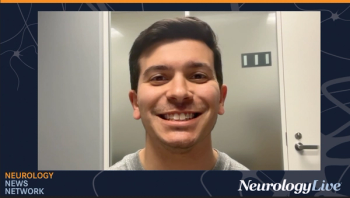
RESTORE Analysis Shows Significant Patient Preference to Once-Nightly Sodium Oxybate Over Twice-Nightly
Patients on twice-nightly oxybate reported more issues with inconvenience, anxiety, and feeling somewhat, quite a bit, or extremely groggy/unsteady the next morning.
Interim results from the RESTORE clinical trial (NCT04451668) revealed that adults with narcolepsy prefer once-nightly sodium oxybate (Lumyrz; Avadel Pharmaceuticals) over twice-nightly, with increased treatment burden associated with twice-nightly oxybate. Overall, 93.6% (73 of 78) of participants preferred the once-nightly dosing regimen.
Presented at the
Although he expected more patients to prefer once-nightly, Harsh was shocked to see more than 94% of the cohort favor the therapy. "I expected some preference based upon context, but 94%, that’s just about everybody.” He added, "We have good reason to believe effectiveness is about the same, side effect profile is the same. Overall, in terms of clinical outcomes, as long as you have compliant patients, it’s about the same. That’s my impression."
RESTORE, an open-label switch study, includes participants with narcolepsy type 1 or 2 who completed the phase 3 REST-ON study (NCT02720744), the supportive trial that
Initial doses for participants switching from IR oxybate were equivalent/closest to the previous total dose/night, with incremental adjustments of 1.5 g/week with a maximum of 9 g/night allowed throughout. After 3 months of treatment, results showed that 39.2% (51 of 130) of those who took their second nightly IR oxybate dose at least 4 hours after the first felt somewhat, quite a bit, or extremely groggy/unsteady the next morning (26 of 51; 51%). In addition, 70.8% of those on twice-nightly treatment felt the second dose was inconvenient.
READ MORE:
Other issues related to the second dose were anxiety (29.2%), and the need to be woken up by someone else (23.1%). Additionally, patients were more susceptible to falls (n = 5) and injuries (n = 9) by waking up to take their second nightly dose.
Once-nightly sodium oxybate
Once-nightly sodium oxybate comes with a boxed warning as a central nervous system depressant, and for its potential abuse and misuse. In early June, Avadel announced the US commercial launch for the drug, indicated for the treatment of cataplexy or daytime sleepiness in adults with narcolepsy.4
"By and large, I think most patients would prefer and benefit from once-nightly dosing," Harsh added.
REFERENCES
1. Roy A, Harsh J, Ajayi A, Stern T, Dubow J, Gudeman J. Patient preferences and nocturnal experiences with oxybate therapy for narcolepsy: RESTORE study interim analysis. Presented at: 2023 SLEEP Annual Meeting; June 3-7; Indianapolis, Indiana. 0581.
2. Avadel Pharmaceuticals announces final FDA approval of Lumryz (sodium oxybate) for extended-release oral suspension as the first and only once-at-bedtime oxybate for cataplexy or excessive daytime sleepiness in adults with narcolepsy. News release. Avadel Pharmaceuticals. May 1, 2023. Accessed June 7, 2023. https://www.globenewswire.com/news-release/2023/05/01/2658536/0/en/Avadel-Pharmaceuticals-Announces-Final-FDA-Approval-of-LUMRYZ-sodium-oxybate-for-Extended-Release-Oral-Suspension-as-the-First-and-Only-Once-at-Bedtime-Oxybate-for-Cataplexy-or-Exc.html
3. Kushida CA, Shapiro CM, Roth T, et al. Once-nightly sodium oxybate (FT218) demonstrated improvements of symptoms in a phase 3 randomized clinical trial in patients with narcolepsy. SLEEP. 2021; zsab200. doi:10.1093/sleep/zsab200
4. Avadel pharmaceuticals announces US commercial launch of Lumryz (sodium oxybate) for the treatment of cataplexy or excessive daytime sleepiness in adults living with narcolepsy. News release. June 5, 2023. Accessed June 7, 2023. https://www.globenewswire.com/news-release/2023/06/05/2681807/0/en/Avadel-Pharmaceuticals-Announces-U-S-Commercial-Launch-of-LUMRYZ-sodium-oxybate-for-the-Treatment-of-Cataplexy-or-Excessive-Daytime-Sleepiness-in-Adults-Living-with-Narcolepsy.html
Newsletter
Keep your finger on the pulse of neurology—subscribe to NeurologyLive for expert interviews, new data, and breakthrough treatment updates.































